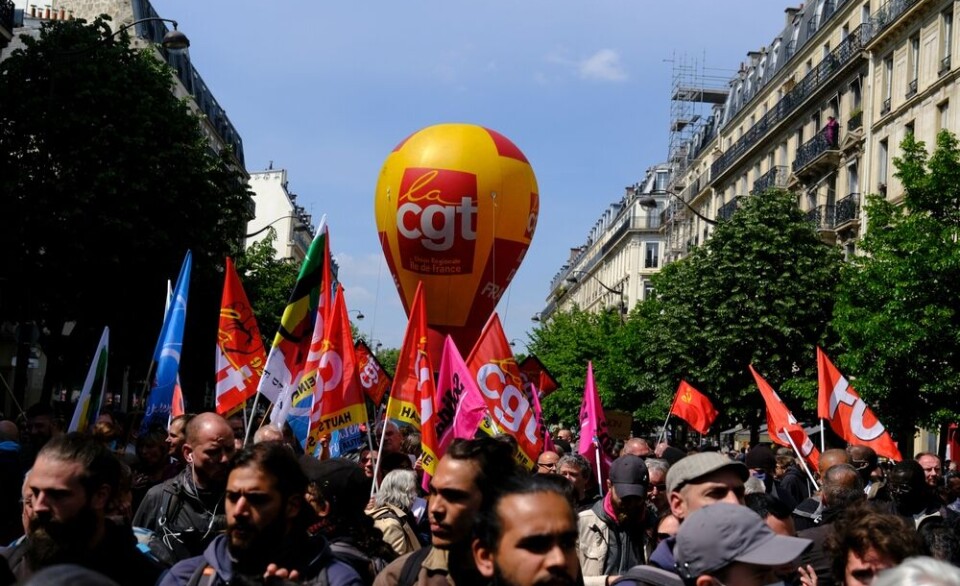-
Can non-residents switch banks in France easily?
Account and card costs are on the rise generally
-
Many Société Générale customers to be charged additional fees from April
There is some good news for international banking and instant transfers, however
-
Why contactless payments under €50 are sometimes rejected in France
The requirement of entering a PIN number for some small purchase is not random
Ethical investing in France
When it comes to the financial world, you are expected to follow and understand A LOT of acronyms. A company I once worked for used to talk about “Three Letter Abbreviations”, or “TLAs” (itself a TLA), coming from a firm whose own name was an FLA, a “Four Letter Abbreviation” – used too, of course, for a “Five Letter Abbreviation.” I am just preparing you for the FLAs and TLAs later here...
This month I was given a choice of two topics: the cost of investing, and ethical investing, with both being popular requests. The two are investing-related so I am going to cover them together.
When it comes to investing in France, most individuals will use the well-known structure of an assurance vie (itself, not an investment, just a wrapper) which for tax and inheritance reasons is hard to beat.
I have looked at other options due to frustrating administration, cost and flexibility on what goes inside these but, having run mountains of analysis, the use of an assurance vie was so fiscally advantageous it was impossible to exclude. So began the mission of how to reach utopia using these unruly Jurassic beasts.
One of my frustrations was the difficulty in getting ETFs (your first TLA) also known as Exchange Traded Funds.
They are very low cost compared to UCITS/a SICAV (your first FLA), which I will simplify by describing them as being like unit trusts. ETFs are, as the name points out, traded on the stock exchange, and are, in effect, shares, so may not be “directly” traded within an assurance vie.
The attraction is to do with the OCF (Ongoing Charge Figure), which tells you the total cost of ownership of a fund, in the same way that APR (Annual Percentage Rate) tells you about the rate of a loan with every possible cost built in.
The cost of a fund used to be detailed just as the AMC (Annual Management Charge) and that was all that was shown to you.
This is now unacceptable and the OCF must be shown. We have seen instances where a fund’s AMC is 1%, but the OCF almost 4%, so around 3% in hidden charges!
All kinds of things can be hidden by just using the AMC and we have seen advisers still using only that, so they can hide exorbitant and undisclosed commissions – always make sure the OCF is shown. Access to ETFs within an assurance vie is normally possible in three ways: either buy a managed fund (a SICAV) with ETFs inside, set up a dedicated fund, appointing a manager, or use trackers with no management of any kind
The first two negate the whole point, as active management is happening in both and significant cost comes with this.
The third is a rudderless ship and leaves the investor scratching around for the right thing to track. Moreover, how is it tracking? This point is seemingly understood by few.
Another way is to manage a portfolio to a proven algorithm, such as EBI (Evidence Based Investing) and/or FBI (Factor Based Investing), removing management and cost, using super low-cost ETFs in line with this.
This way, it is possible to access a truly global portfolio with assets so diverse, holdings can number over 20,000, yet with an OCF of around half a per cent.
If you think this all sounds a bit new age and the next fad doomed to failure, the concept of EBI has existed since 1956 and won several Nobel prizes for economics, with a history of always being successful for the long-term investor.
How many funds/fund managers can make the same claim? Not many fund managers beat the market, even before applying their significant charges, so why pay them so much to try?
What is also interesting is the availability of ESG (Environmental, Social and Governance). This is indeed a new buzz word (also a TLA).
This goes beyond ethical funds which merely avoid “sin” stocks, such as tobacco, weapons, gambling and alcohol, and into responsible investing, looking at all aspects of how your money is used, beyond how it is “directly” invested, with companies having to prove their supply chains also act responsibly.
In general, companies that care about how they are perceived tend to be in it for the long term and will behave and do things the right way, avoiding scams and scandals.
Far from there being a cost or penalty for the investor, they are avoiding potential losses by swerving companies which do harm.
The focus of ESG is by applying “filters” to certain stocks or funds. A company may offer a fund, one without a filter and another with, merely filtering out those companies which are not acceptable under ESG rules.
What decent human being would not want a filter to weed out evil practices, such as firms using child slavery?
Stronger filters may do more – and filter in. This means adding in companies that do good, investing in sustainability, low-carbon energy, health or water, which have a long-term potential to deliver attractive returns.
I’m happy to say that all this is possible inside a French assurance vie in a range of currencies. The French market is evolving and in a positive way.
This column was written by Robert Kent of Kentingtons financial advisers. Seewww.kentingtons.com
























